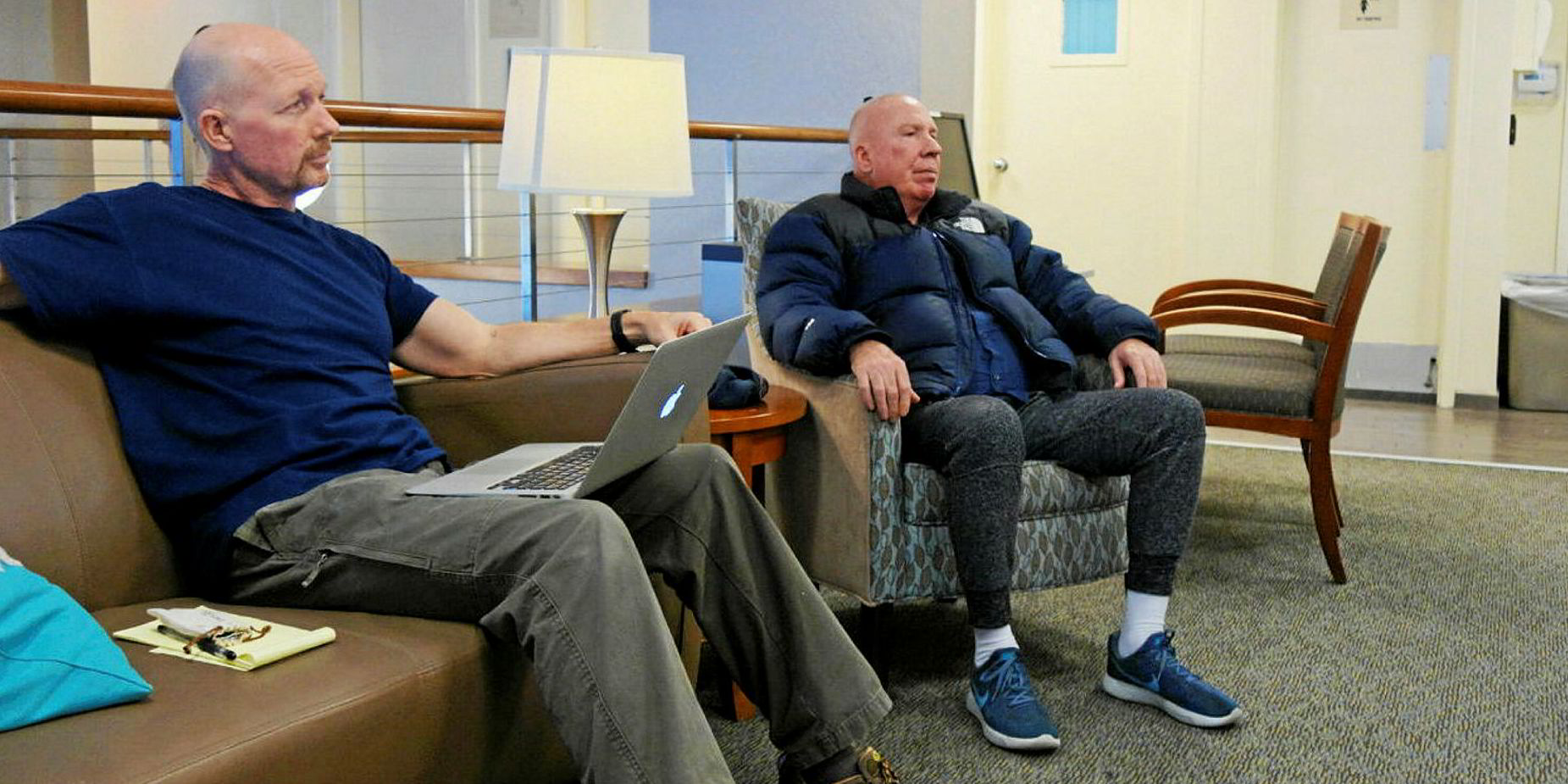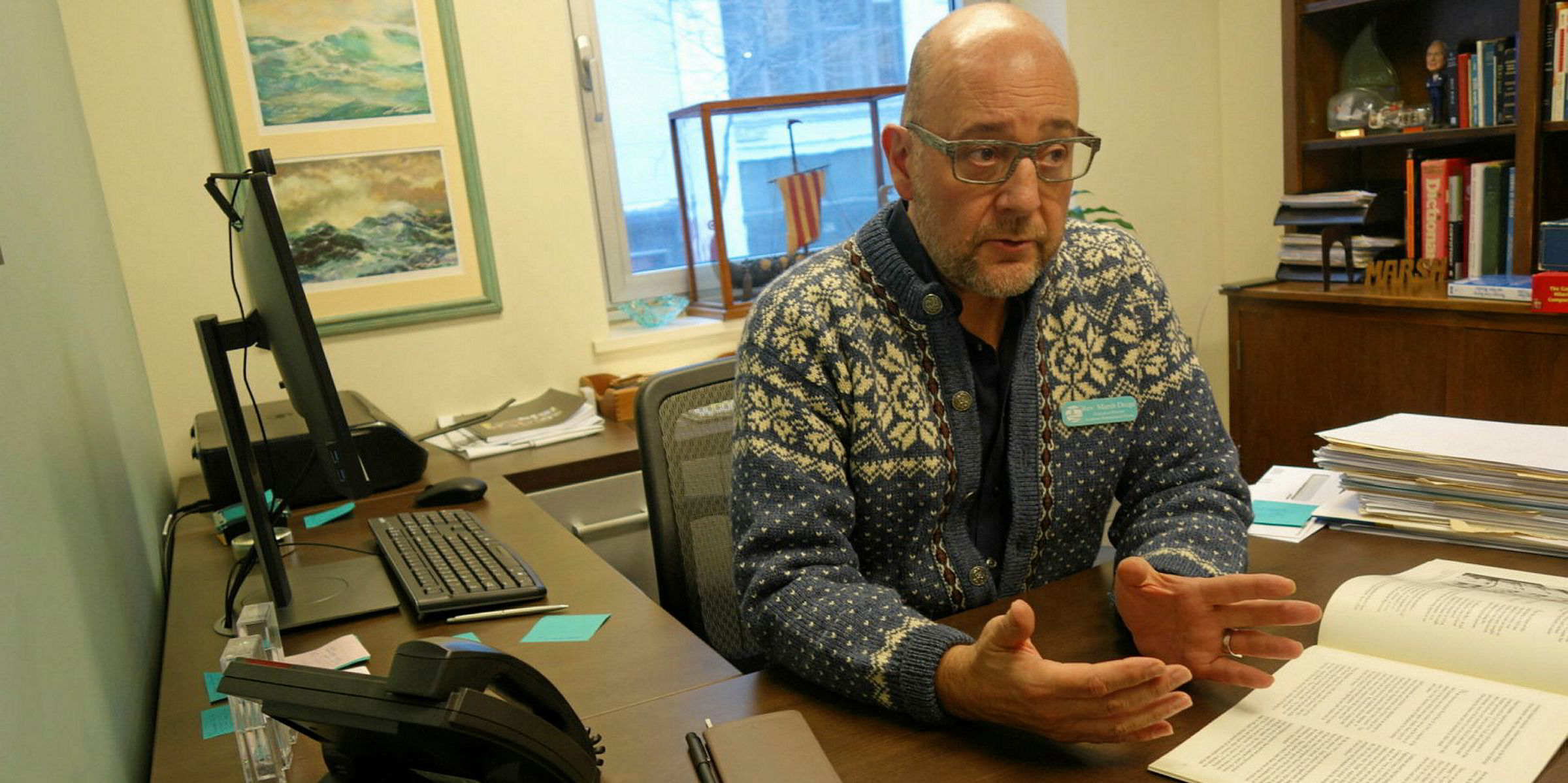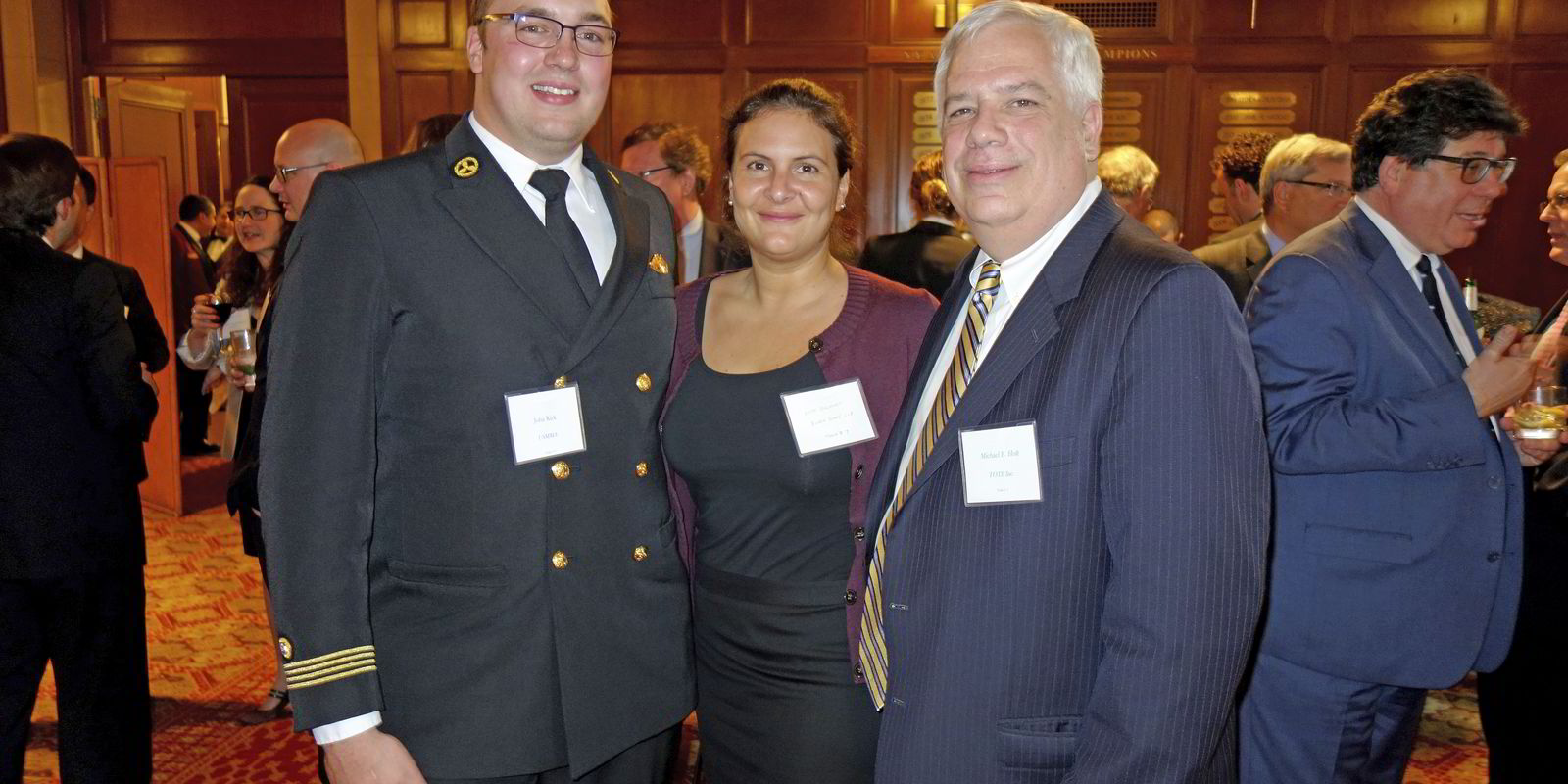The East 15th Street building round the corner from Manhattan’s Union Square is an affordable way for tourists to secure clean lodgings in a city known for expensive hotels. But for many US mariners, the non-profit Seafarers International House is a home.
Able seaman Greg Baker says: “I wouldn’t be able to ship out of New York ... or New Jersey now if it wasn’t for this place.” He typically spends one to three weeks at the house between jobs at sea.
“There’s just no other place available that accommodates merchant seamen for this kind of pricing,” he adds, while using his laptop in the guest house’s common area.
The Lutheran charity that runs the building, with help from donations, in addition to hotel rates paid by tourists, serves twin missions. It is best known in shipping circles for providing accommodation and respite to mariners on commercial vessels.
But the charity, an affiliate of the Evangelical Lutheran Church in America, also aims to help refugees in a handful of its rooms in the weeks after they are granted asylum and released onto the streets of New York.
Prices at Seafarers International House are typically $94-$160 per night for tourists, depending on the time of year. Prices for seafarers are $48 per night, year round. Asylum seekers receive free accommodation.
Its efforts are a response to the vulnerabilities of the immigrant and seafaring communities.
In both missions, in addition to making its 84 rooms available, Seafarers International House serves as a voice against “confinement”.
“We have a strong sense of justice and fairness. We believe our faith calls us, as Jesus taught us, to care for those, to advocate for those who don’t have a voice, those who are strangers in our midst, whether they be seafarers or immigrants,” says Marsh Luther Drege, who runs the guest house.
For seafarers, it has been a voice against the US government’s denial of shore leave under the International Ship and Port Facility Security Code in the wake of the 11 September terrorist attacks in 2001.

Drege says the situation has improved, but Seafarers International House continues to advocate, to ensure the easing is not reversed.
For immigrants, the guest house has pushed back against the practice of holding asylum seekers in detention centres in conditions that it describes as “unconscionable”.
The charity was founded by a Lutheran church in 1873 to serve Swedish seafarers in New York. In 1895, it began renting two houses on Moore Street in Lower Manhattan to help Swedish immigrants.
84
Guestrooms at the house
28
Asylum seekers served
25,183
Number of seafarers visited or transported onboard ships in port
1,852
Christmas at Sea satchels delivered
*2018 figures
Source: Seafarers International House annual report
The mission shifted over time. As the wave of immigration slowed during World War I, the focus turned again to vulnerable seafarers coming to port at the nearby docks. During the Great Depression of the 1930s, the emphasis for a time was on the homeless.
The house moved into its present home in 1964, around the time containerisation was beginning to reduce the number of seafarers needing its services as shipping became more efficient and major port activity shifted from New York to New Jersey.
Serving asylum seekers was made possible in part because fewer seafarers in the New York area were using the house.
Of the guests, 20%-30% are seafarers, primarily Americans waiting for their next ship, which can take longer than it once did as they encounter more stringent health screenings to ensure they are fit to sail.
For those many mariners who have no shoreside home in this expensive real-estate market, Seafarers International House offers large lockers where they can keep personal belongings while at sea.
As he chats with mariner guests in the common area of the guesthouse, Drege quizzes Baker about whether he always finds a room available when he needs one.
“I’ve just been fortunate,” replies the AB. He has always found a room even when he has had to stay the maximum 21 days, spend a night elsewhere and then return. But he says the consensus among crews is that there is less availability.
“That’s important to know, because our main focus has to be seafarers,” Drege responds.

In addition to providing rooms to merchant seamen, six port chaplains take aid to mariners onboard ships calling at New York, New Jersey, southern Connecticut, Baltimore and Philadelphia.
Arriving in their vans, the chaplains take wifi hotspots, phone cards and other items onboard. They also provide “spiritual and emotional assistance” in what they call a “ministry of presence” to see what the seafarers need, although Drege insists the charity does not proselytise at the house or on these visits.
If the crews can get off their ships, the vans will take them places to run errands or even see tourist attractions or visit relatives. But why aid seafarers at port when ships have agents to deliver basic necessities?
We see those who are often invisible. We try to see all of their needs, the whole person ... We just try to be another source of care
Marsh Luther Drege
Drege says seafarers often have other needs, such as dealing with trauma onboard or problems with pay. The state of seafaring has improved, with better wages and less piracy, but the chaplains are concerned about increased depression and suicidal thoughts.
“What we do is, we see those who are often invisible,” Drege explains. “We try to see all of their needs, the whole person ... We just try to be another source of care.”
Over the past eight years, Seafarers International House has provided accommodation for nearly 100 refugees who have been granted asylum but who needed support to get their start in the Big Apple.
“It’s been such a rich and such a beautiful experience for us to be kind of this nest for asylees,” Drege says. “We see them come in, they have only been in this country and experienced a detention centre. They have literally not seen the sky for six, eight, nine or 12 months.”
Housing refugees emerged from discussions that began a decade ago about how to use the growing availability of rooms to serve another good.

The group’s board began hearing problems about asylum seekers having a hard time adjusting after leaving detention centres. The charity partnered First Friends, which provides volunteer visits, resettlement support and advocacy for immigrants, focusing on helping asylum seekers at two detention centres in New Jersey.
Drege says Seafarers International House was a natural fit to help refugees start afresh after release from the prison-like centres. As they seek employment in New York, the newcomers usually do not have enough of a support network to provide accommodation.
The migrants often spend up to three rotations of the maximum 21-day stay allowed, sleeping one night elsewhere between each stint.
Drege says the house, with the help of an intern social worker, makes sure refugees are not under pressure to sort out their new lives too quickly. They receive a room of their own, with a television, to “decompress” alone.
“We give them a little bit of respite and say: ‘You don’t have to figure it out in the next 24 hours’. The first thing they need is just to have a little space.”





